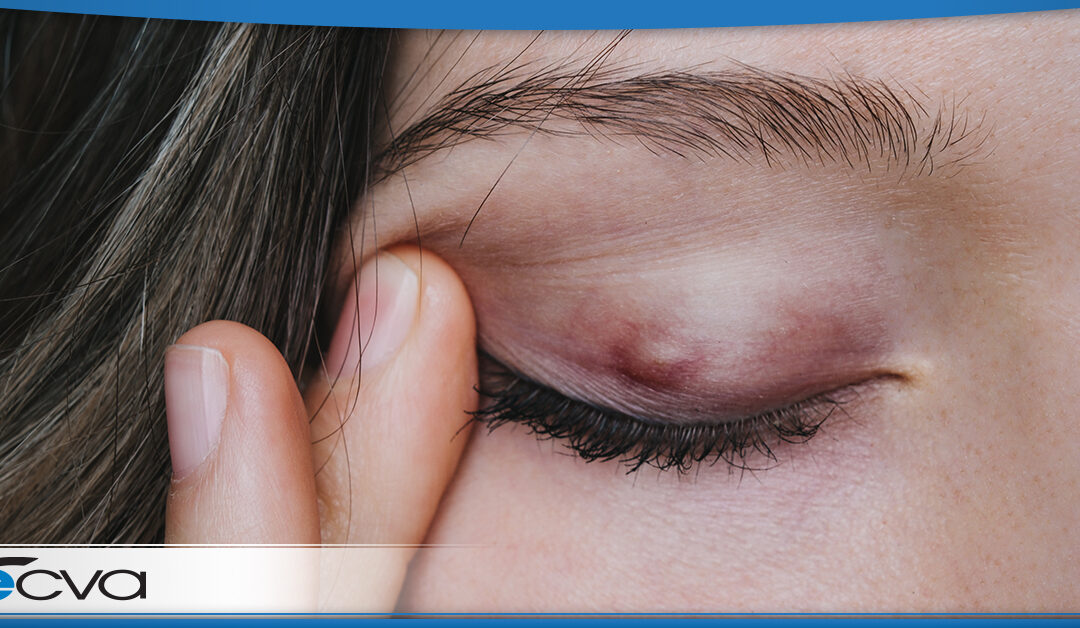Finding a bump near your eye is always startling. You may be wondering if it is dangerous or what you should do to handle it.
How you should proceed depends on the kind of bump you find. If the lump is small and red – with or without a white head – and located on your eyelid, there’s a good chance it’s a stye. Here’s what you need to know about styes, including what they are, what causes them, and how you can prevent or treat them.
What Is a Stye?
Styes are usually small bumps that form on the inside or outside of your eyelid. They are typically a bit red and may present with a white head in some cases. At times, a stye may be sore, usually a side effect of inflammatory processes. However, it also may feel fine.
Generally, styes appear on only one eyelid at any given time. However, it is possible to have multiple styes at once, including some on each eyelid.
What Causes Styes?
Styes aren’t unlike pimples. They occur when glands located on your eyelids get clogged and inflamed. When the gland clogs, it swells and can fill with fluid (pus). This causes it to get larger as time passes, at least until it opens up and drains.
How to Prevent Styes
Good hygiene practices can help you prevent styes. Make sure to wash your hands with soap and water before you touch your eye area. Additionally, clean your face with a mild cleanser regularly.
If you wear makeup, remove it every night. You should also replace your eye makeup every six months, or after you have had a stye. Also, avoid sharing towels with anyone who has a stye, as the bacteria can transfer over to you, increasing your odds of getting one.
How to Treat Styes
In most cases, a stye will go away on its own within a few days. However, you can try to speed the process along a bit. First, don’t squeeze or “pop” a stye. That can lead to more inflammation and swelling, and potentially push an infection deeper into your eyelid.
Instead, wash your hands with soap and water, and then soak a clean washcloth in warm (not hot) water. Place that over the stye to help encourage the gland to open. You can also gently massage the stye with clean fingers to try and open it up. Make sure to clean your face and eye area regularly. If you need a gentle cleanser, try baby shampoo.
If you’re experiencing any discomfort, consider ibuprofen. It reduces inflammation and can reduce pain. Additionally, if you usually wear contact lenses, switch over to glasses until your stye heals. Also, make sure to thoroughly clean your contacts before you use them again, or switch to a new pair once you’ve recovered.
Your Eye Health is our Priority
Should you become concerned about a stye or aren’t sure that the bump is one, it’s best to see an eye doctor. They can identify the lump and recommend a course of treatment, if necessary.
Our experienced team works diligently to keep our patients’ eyes healthy, including identifying causes of bumps that may occur. If you would like to make sure your eyes are healthy, schedule an appointment at your closest ECVA clinic today.


